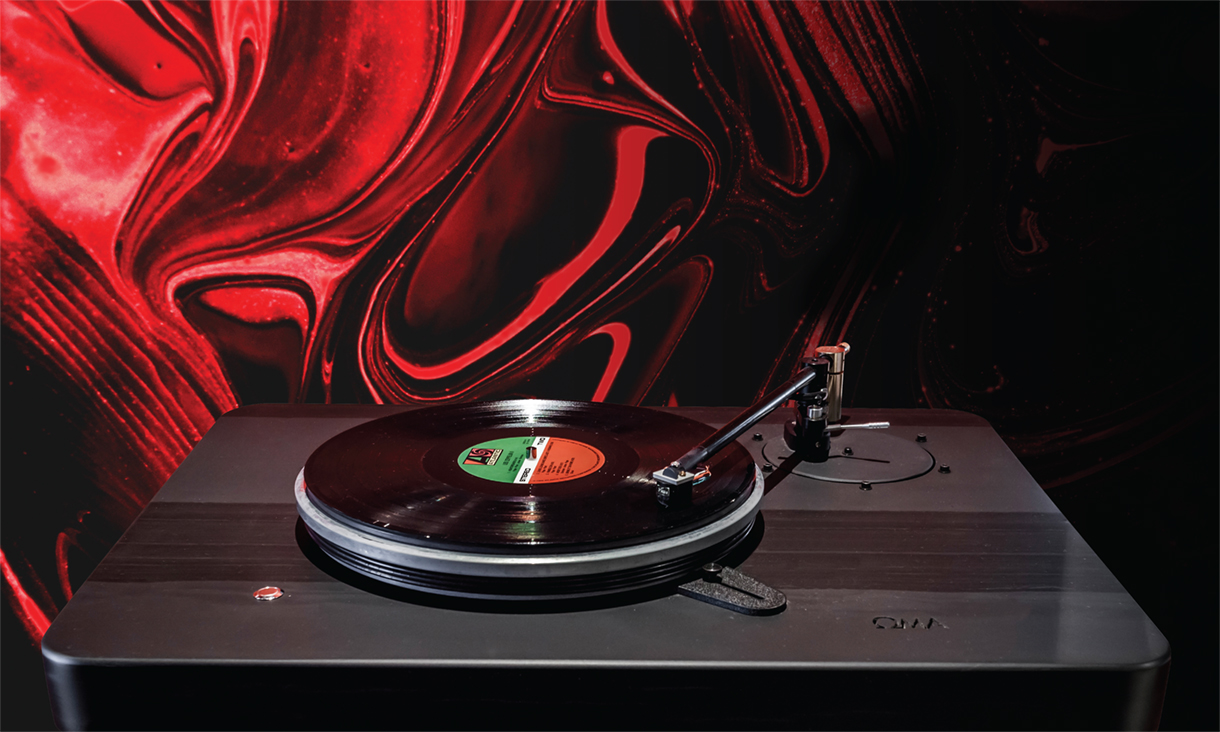
Sound Investments
Top hi-fi shops know how to pair the best audio systems for the ultimate listening pleasure.
“Some people want to understand the fundamentals of sound,” he says. “So, that means understanding the difference between a preamp and a line stage and at what frequency range a subwoofer starts rattling your rib cage. And in those cases, I’m happy to give them my verbal dissertation.”
As knowledgeable as he is, Lord is also a great listener. Most people just want a system that recreates music the way the musicians intended—whether seeking the deepest realm of esoterica or something that simply sounds amazing. Lord and good hi-fi dealers like him take great care to understand their clients, and will only lead them as far down the audiophile rabbit hole as they want to go. Ultimately, good dealers are working with clients to customize a system that is perfectly suited for them, their tastes, and their listening environment. The experience of walking into a really good hi-fi store should feel like entering a private membership club. Many stores see clients by appointment only to ensure that their experts can dedicate substantial time to guiding clients, who are realistically looking to spend from $5,000 to $500,000, and well beyond that. For serious audiophiles (and those aspiring to be), seeking out the components that make up their dream system—amps, preamps, line stages, digital-to-analog converters, turntables, cables, speakers, etc.—requires more than an online search or a few minutes comparing specs. Each component should complement the others and take into account the listening space, which can have a dramatic impact on the sound. Individual preferences come into play with regard to music variety and how clients listen. Is it in an Eames chair with a single malt, a living room while hosting a party, or within the confines of a dedicated home theater?
For anyone spending serious money, listening to the components before buying them is a critical part of the decision-making process. And to do that, you need somewhere that has the best gear sold by passionate, knowledgeable audiophiles, such as these three seasoned sages.
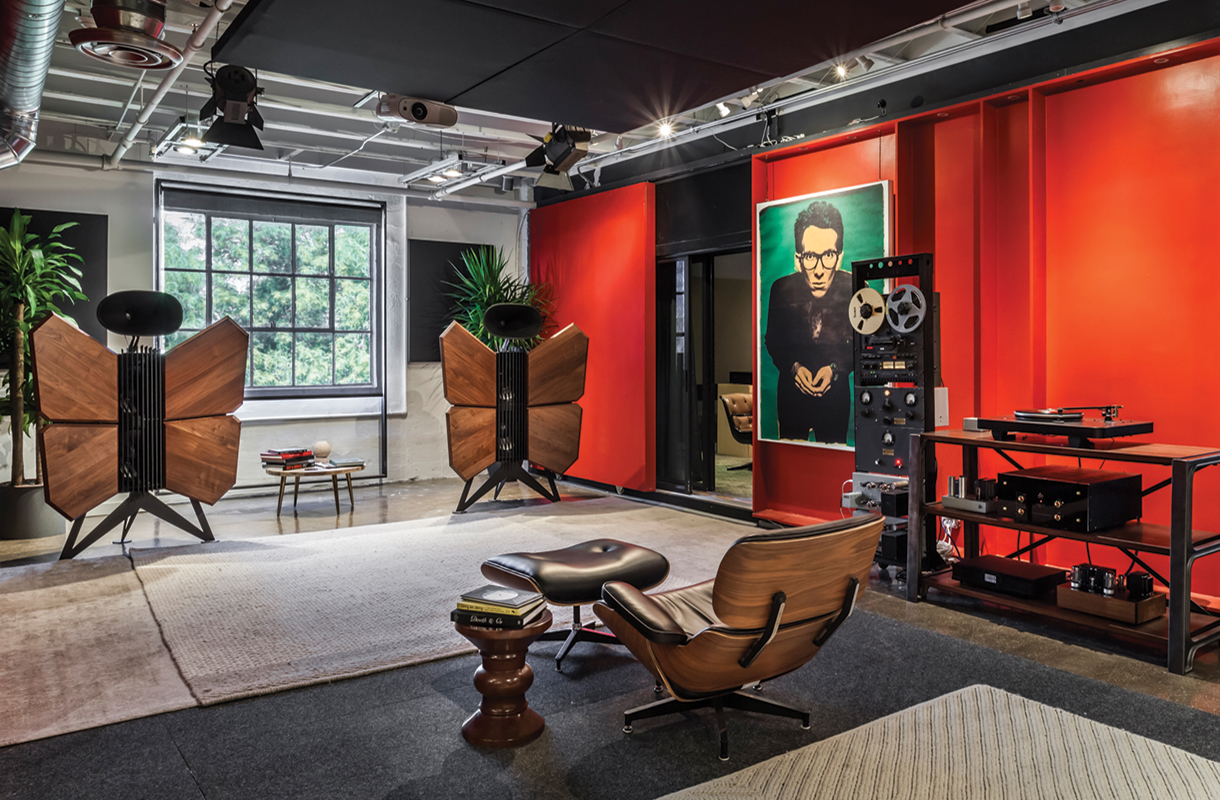
Soundlux Audio, Miami
It is not the easiest place to find in South Florida. “That’s by design,” says Soundlux Audio founder Eric Gould. The shop’s somewhat out-of-the-way location, in Miami’s Wynwood arts district, makes it a destination, rather than a storefront that you wander into. “That’s because this whole place was designed to create an experience.”
The 2,700-square-foot shop, which Gould opened in 2015, is on the third floor of a 1920s warehouse and six listening spaces (plus a dedicated headphone room) are laid out to feel like rooms you might actually have in your home. That results in audio equipment sounding the same way in your home as it did in the store.
“Gear sounds here how it does in a real space,” says Gould, “rather than in a sonically perfect space, which doesn’t exist in most homes.” He notes that too many hi-fi shops have rooms designed purely for listening to music and that the majority of Soundlux’s customers don’t listen to music by themselves while locked in an anechoic cube.
Gould is quick to point out that he and his colleagues are not audio engineers. They just love music, which helps them connect with their clients—who are passionate about music but may not know much about hi-fi components. “Those are our favorite customers,” says Gould, who has been in the audio business for five years. “Then we can learn about how they best enjoy music to nail down an experience that facilitates a meaningful connection with it.”
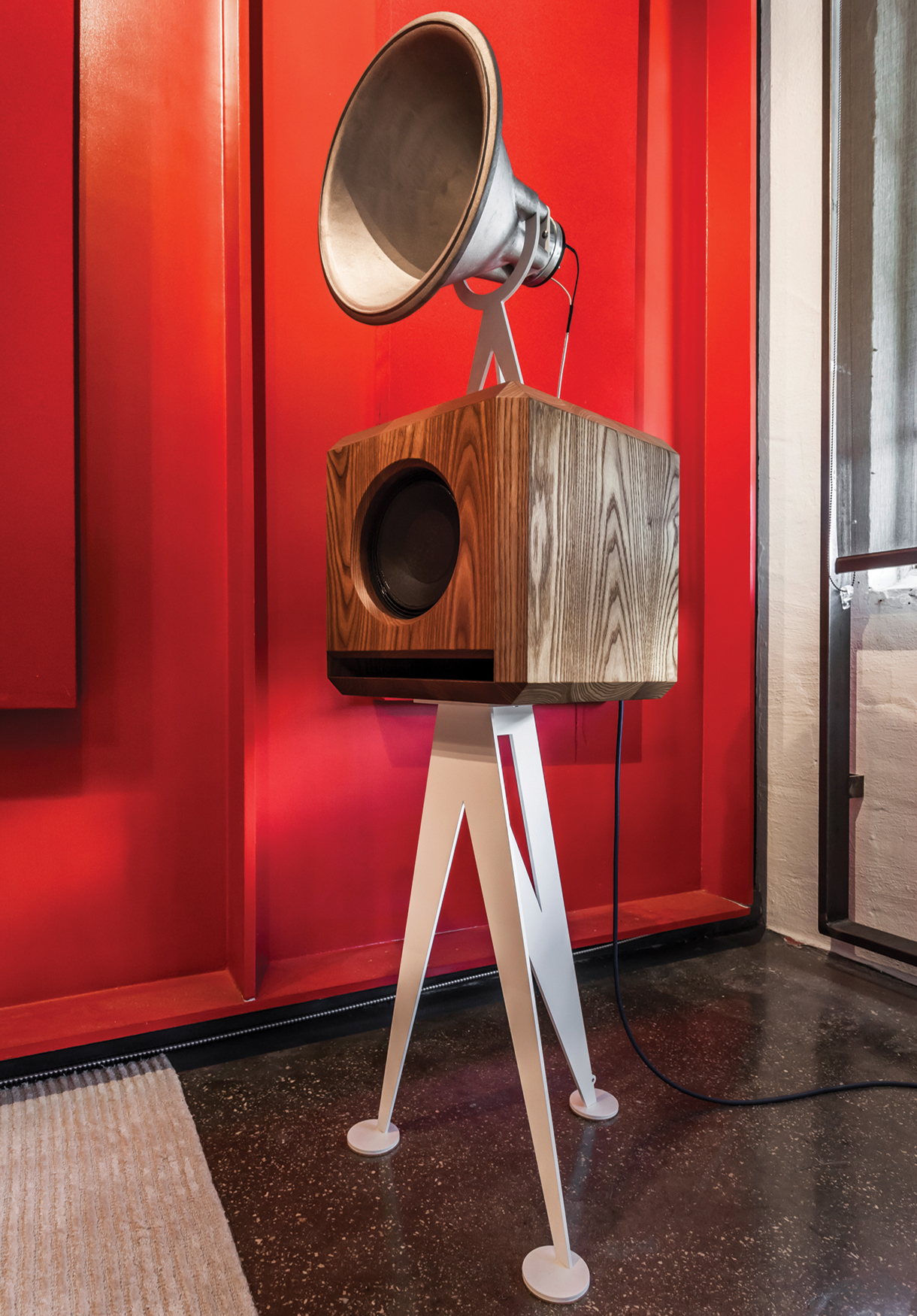
The product range at Soundlux tends toward the analog end of the spectrum because Gould feels that tubes and vinyl create a warmer, more intimate sound. But the shop also carries solid-state amplifiers and every demo system includes a digital front end (like a wireless music streamer or a digital-to-analog converter able to play back digital music files) in addition to a turntable or reel-to-reel tape deck. Gould wants to assist his customers in putting together digital and analog systems designed to help them emotionally connect with the music they love. High-quality digital components can in fact create deep musicality. However, Soundlux is unabashedly a vinyl-first shop, with a huge collection of vintage LPs for sale, as well as lots of tube-driven amplifiers and horn speakers (above).
One of Gould’s favorite speakers is the $153,000-per-pair Oswalds Mill Audio Monarch (shown), which, as the name suggests, resembles a giant butterfly. With cast horns and big, sound-projecting wings of American walnut from western Pennsylvania (where the speakers are manufactured), the component is only available in the United States through Soundlux. “Horn speakers are more dynamic and lifelike. Ultimately, we’re concerned first and foremost with the quality of sound reproduction of our equipment. It’s our job to pick up on what gives customers the deepest connection and most enjoyment.” soundluxaudio.com
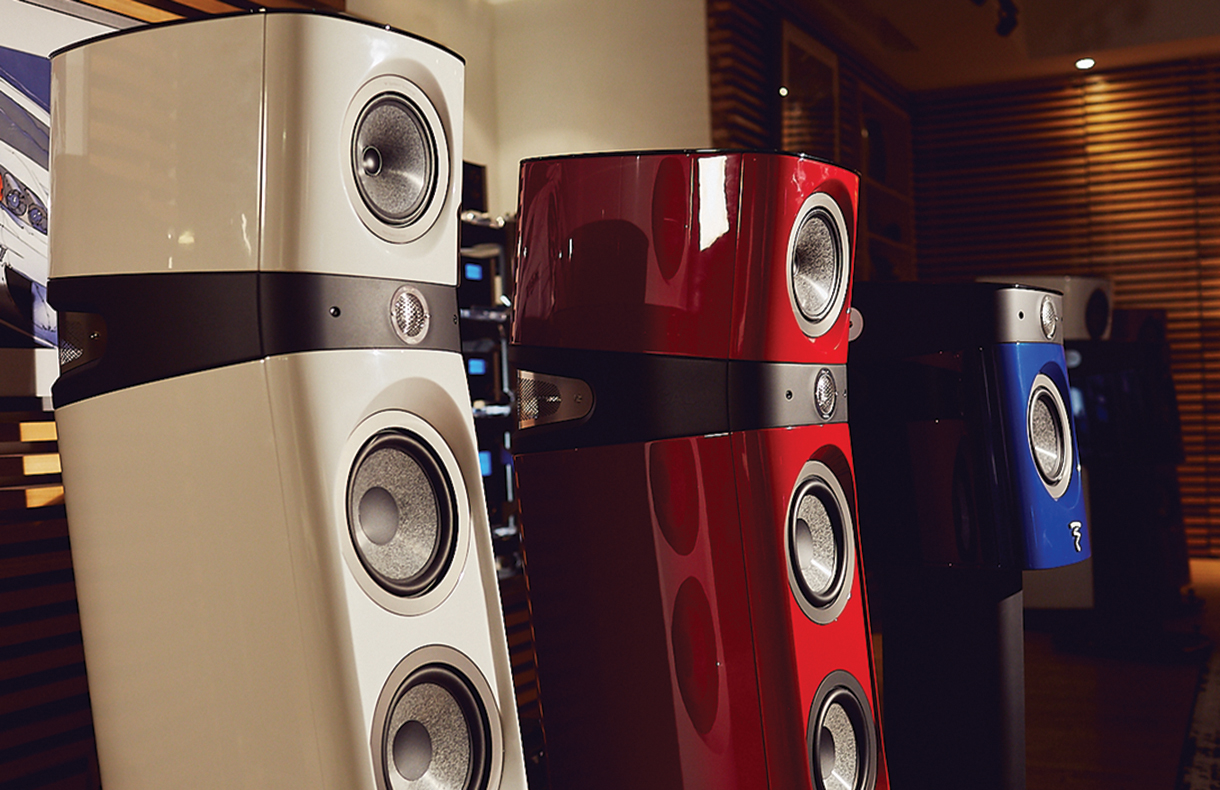
NoHo Sound, New York City
Early next year, Alex Roy plans to open what he calls “a membership club with the world’s best sound systems on every floor.” Roy’s NoHo Sound in Manhattan’s NoHo district already has a reputation for being one of the top hi-fi shops in the country. But now the racecar-driver-cum-audiophile (he’s broken endurance driving records) wants a truly experiential space that goes far beyond traditional brick-and-mortar shopping. The new location in Tribeca will comprise six stories plus a roof deck and a basement jazz bar for live performances. Clients can hang out as long as they want and get a cocktail while listening to music on different systems.
“It’s the kind of place that doesn’t exist anymore,” says Roy, citing the CBGB music club of 1970s East Village fame as a source of inspiration. “If you love art, you go to the Louvre or MoMA or the Met to experience the most beautiful art ever created. But if you love music, there is literally nowhere you can go to have a museum-level experience with archived tunes. So, we want to do that and take it to the highest possible level.”
Roy says that each floor of the new space will feature different hi-fi setups, specially created for that environment to give clients a variety of listening experiences. One space might feel like the apartment of your coolest friend; another might feel like an open studio loft; another like a fashion designer’s penthouse.
That experience, Roy says, is paramount when making purchasing decisions, because an important aspect of shopping at NoHo Sound is imagining the equipment from brands such as McIntosh Labs, Focal, Aurender, Naim, TAD, and others in your home. To that end, it’s also critical that Roy and his colleagues build personal relationships with their clients so that they can understand their idiosyncratic preferences. “The first question we ask is, ‘How do you want to experience music?’” explains Roy. “And then we let clients sit as long as they want and listen as much as they want. We’ll spend four hours with someone if that’s what they need.” nohosound.com
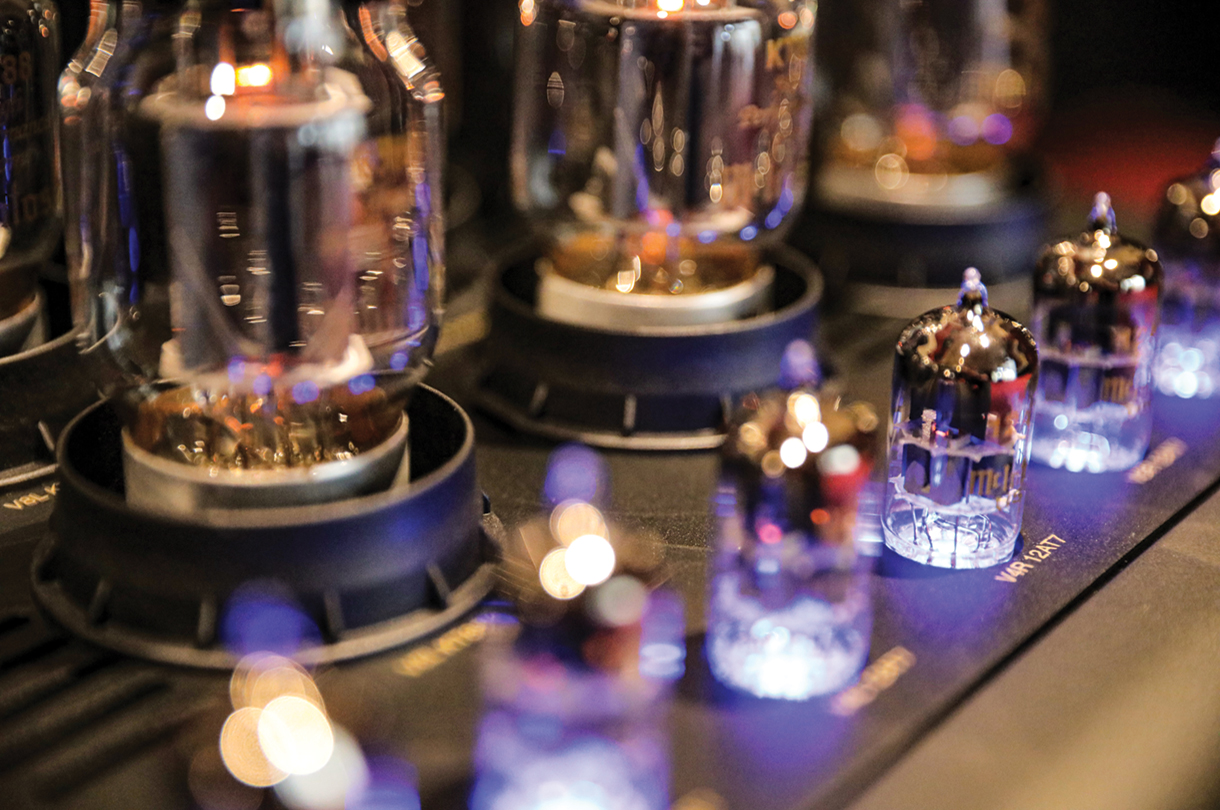
The Source AV, Los Angeles
In addition to being one of the biggest and best hi-fi shops in Southern California (and likely the United States), The Source AV also sells home theater equipment, and so it has six dedicated theaters at its 16,000-square-foot facility in Torrance, just south of Los Angeles. It also has a 1,500-square-foot headphone bar and typically no fewer than a dozen different two-channel hi-fi systems ready to be evaluated and enjoyed.
“I’m told that we’re the largest high-end headphone dealer in the world,” says co-owner Jason Lord. “There’s a guy in Taiwan who actually has the world’s largest headphone store, but we sell higher-end brands.”
Indeed, to anyone familiar with high-end headphones and headphone amplifiers—yes, many high-end headphones benefit from (and even require) a purpose-built headphone amplifier—the Source has the greatest hits from the likes of Focal, Sennheiser, Grado, Audeze, Woo Audio, HiFiMan, and Stax. The store also hosts regular listening events for its top clients, including with German company Sennheiser, which recently brought its $59,000 marble-chassis, tube-driven Orpheus headphone system to the Source. “People are eager to listen to that setup and we sell plenty of them,” says Lord.
The Source gets a lot of (sometimes ostentatious) Los Angeles clients eager to spend money on the best equipment, but Lord says it’s never a matter of simply selling them the best or most expensive gear.
“Even for people who come in with a budget and say, ‘Just pick out something good for me,’ we still put them through an audition process so we can find out what raises their eyebrows or the hair on their arms and makes them feel an emotional response.”
Among the ultra-high-end brands that The Source carries—McIntosh Labs, Audio Research, Boulder, Sonus Faber, Quad, Focal, and others—are SAE amplifiers and XTC racks. Lord is always happy to talk electrical engineering and soundwave mechanics with his clients, but more often than not, they just want to hear good music on amazing hi-fi systems, which he always has at the ready. thesourceav.com




